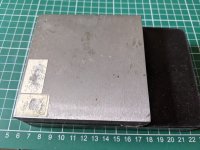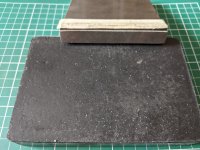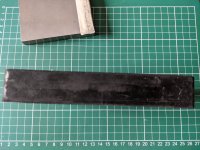I have a recently acquired Filarmonica 13 Sub-Cero. It's in good condition so doesn't need much done to it.
I've almost cleaned it to a point I'm happy with, mostly the tang needed work but blade is in excellent shape with zero honewear, in fact I don't think this Fili has ever been used.
I de-pinned the pivot end to give it a thorough clean but I'm wondering what the original pins are like.
This has the nail style pins and I have one I can use but I'd like to keep it as original as possible and know what the factory uses.

I've almost cleaned it to a point I'm happy with, mostly the tang needed work but blade is in excellent shape with zero honewear, in fact I don't think this Fili has ever been used.
I de-pinned the pivot end to give it a thorough clean but I'm wondering what the original pins are like.
This has the nail style pins and I have one I can use but I'd like to keep it as original as possible and know what the factory uses.



